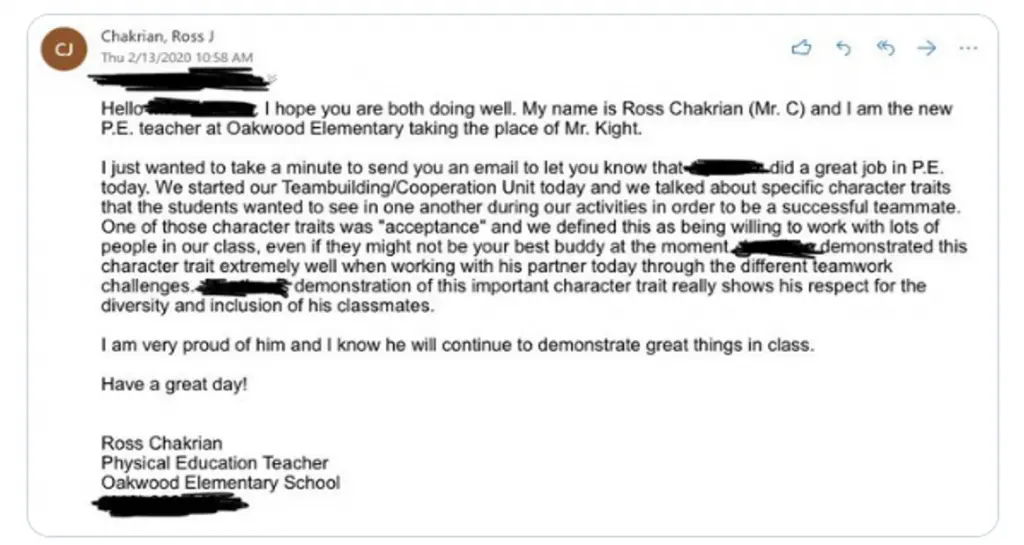As teachers, we know that teaching is an extremely rewarding profession, but it is also one that presents many challenges. Disrespectful and disruptive student behaviors are examples of some of the challenges that teachers face on a daily basis. While these challenges are frustrating from the perspective of the teacher, behavior management strategies are not only helpful, but are extremely necessary in order to maintain an environment that is focused on student learning. In this blog, I hope to share some strategies that have worked for me in the past that can hopefully help you as well!
1. Relationships are EVERYTHING:
Having just recently taken over an elementary PE program mid-year, building positive relationships with my new students has been my main goal. The importance of getting to know our students on a deeper level can’t be over stated. In my 10 years of teaching, I have found the saying “they don’t care how much you know until they know how much you care” to be extremely true. Taking the initiative to go beyond your students’ PE time to get to know them can go a long way. During the school day, spend time with them during their lunch shifts, play with them out at recess, and offer to allow students to come down to the gym as a part of their earned breaks/rewards as ways to get to know them on a deeper level while in contexts other than PE class. Taking the time to do these “extra” things with all students is important, but I would say it is imperative to do so for your students that have challenging behaviors. These acts build the trust that students have in you as a person, allowing them to lower their guard. It also shows them that you are there to support them and come from a place that has their best interests at heart. Building a solid positive relationship with a student is a proactive behavior management strategy as the student is often easier to reason with in relation to future instances of misbehavior.
2. Catch Them Being Good:
Positive reinforcement can do wonders in relation to rewarding targeted behaviors when demonstrated by students. There are many ways to positively reinforce students and often times, schools may have entire systems in place for this (PBIS is one example). Over my time in the gym, I think the strategy that has worked the best in relation to positive reinforcement has been sending home positive postcards/emails and making phone calls to home. Utilizing this strategy has been beneficial for me, especially with students that have frequently demonstrated challenging behaviors in class. Here is an example of a positive email I recently sent home for a student that had shown difficulties working with others in the past:

3. The “Reflection Section”
Like I have mentioned, my new school has some students with very challenging behaviors. Often times, these behaviors not only negatively impact the student demonstrating them, but other students in class as well because of the disruptive nature of said behaviors. Over the years on Twitter, I have seen many versions of “Calm Down Corners” and after observing and assessing the needs of the students at my new school, I knew I needed a tool that would allow for my students having a difficult time to de-escalate while also allowing them to reflect upon their actions. This is how my idea for the “Reflection Section” came about. I took inspiration from many different teachers’ “Calm Down Corners” as well as influence from the Code of Conduct of my new school to come up with the final product that can be seen below.

In class, if I have a situation in which a student is having repeated difficulty with any of our 4 expectations (Be Kind, Be Cooperative, Be Safe, Be Prepared), then I will often ask the student to review the “Reflection Section” on the wall. Once there, the 4 steps act as a flow chart for the students to follow. Beginning with calm down/de-escalation tasks for the students to choose from in Step 1, they then progress to reflect about their actions in Step 2, followed by how they can make better decisions in Step 3, and finally alert me when they are ready to talk in Step 4. So far, the “Reflection Section” is showing signs of working as a behavior management strategy within my own gym. Those that have been asked to use it have been able to take themselves through the flow chart and their perceptions within their reflections, and they have often matched up with mine. If you would like to customize the “Reflection Section” for use within your situation, click here for an editable template created with help from Becky Foellmer (@foes4sports on Twitter).
These behavior management tips have served me well in my transition into my role within my new school. Questions? Have your own tips about behavior management in PE? Please share in the comment section below to keep the conversation going!





2 Responses
I really enjoy the reflection section because whether people know it or not they have a strategy for the actions they’re doing, they can just be hard to describe at times. But really thinking about what I did makes me curious to what others did and if they did better and why.
Should the Reflection Section be in a high-traffic or low-traffic part of the gym? Students put their waterbottles on the pulled-out part of the bleachers, which is also where I keep supplies and my computer, and we don’t use the other section, which is by the entry/exit door.
I teach PreK-8th. Will this work for all age groups?
Thank you!